Walk into a Vietnamese lacquer studio, where each brushstroke is a lesson in patience. Explore the artistry, philosophy, and dedication behind this timeless craft. Step beyond the surface and discover a world where discipline meets intuition, where every layer holds a story waiting to be unveiled. ____________________________________________________________________________________________________________________________________
Between Control and Surrender: The Art of Lacquer
The wind howled through the narrow streets, pushing the rain sideways in thin, silver streaks. My coat was damp by the time I reached the lacquer painting studio in the little alley in Ha Dong, Vietnam. The wooden door creaked as I stepped inside, shaking off the last traces of the storm.
The scent of Vietnamese lacquer paint—earthy, sharp, unmistakable—clung to the air, mingling with the faint bitterness of tea and the lingering musk of aged wood. The dim studio was alive with quiet movement. In the low glow of overhead lamps, the glossy surfaces of unfinished lacquer paintings reflected amber light, their wet layers glistening like hidden lakes beneath the brushstrokes.
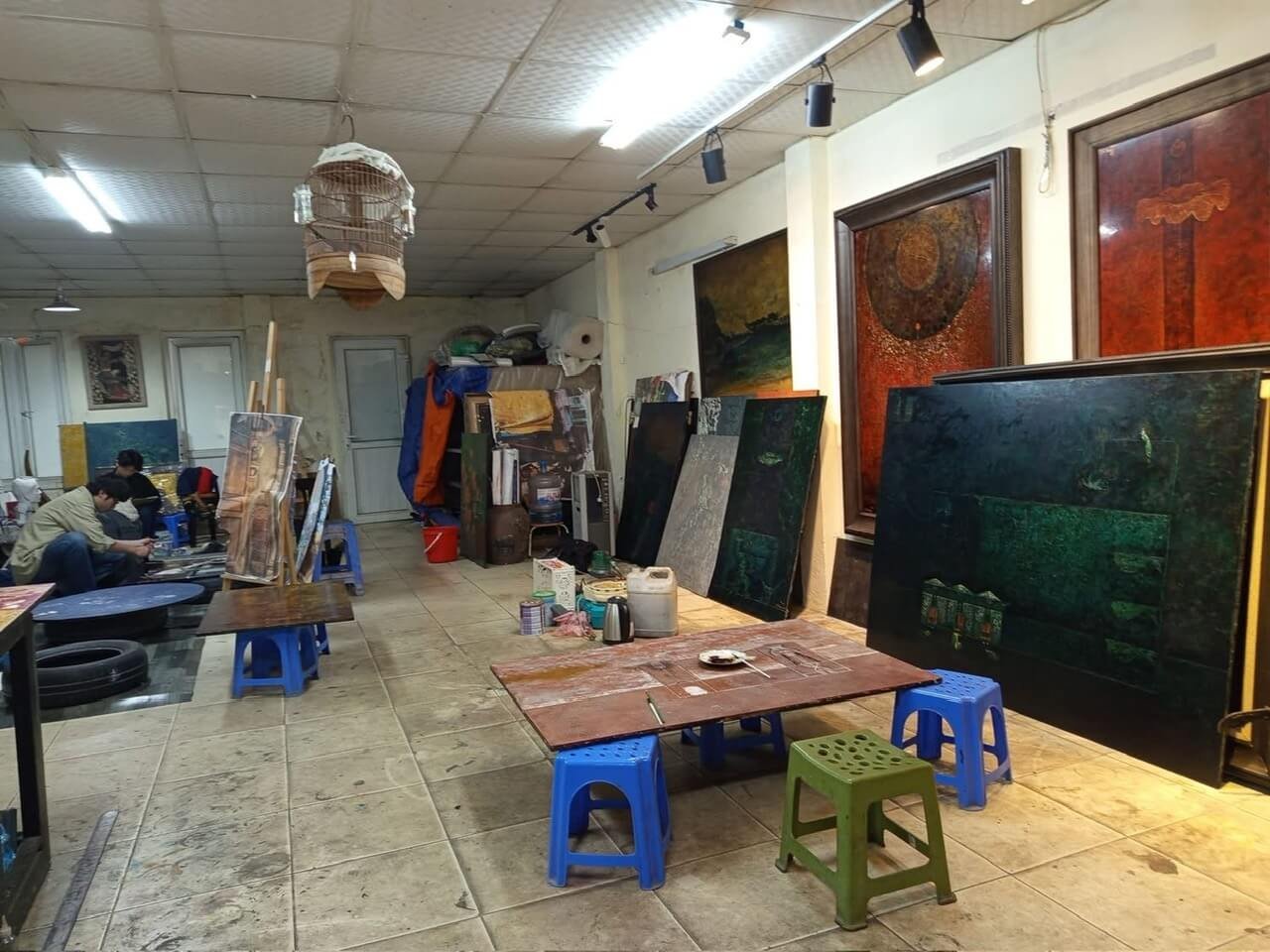
I was welcomed with knowing nods and murmured greetings. Though I had visited many times before, each return felt like stepping into a different world. The atmosphere, the energy—always shifting, like the lacquer sanding process itself, unpredictable until the final stage.
Seated among the scattered tools and paint-stained rags were Vietnamese artists Lương Duy, Nguyễn Thành Chung, Trần Hữu Dũng and Trần Việt Hùng. We eased into conversation slowly. In my experience, traditional lacquer artists rarely reveal their secrets outright. Learning from them is a patient excavation—sifting through layers of words until you uncover something precious.
It was early spring, the time when lacquer artists rushed back to their canvases, chasing the perfect humidity before the season passed. In Vietnamese lacquer art, spring is lacquer season.
I leaned against a workbench, watching as Dũng mixed yellow lacquer pigment powder with tree sap. “How do you tell the difference between Japanese lacquer and Vietnamese lacquer paint?” I asked.
He tilted his head, considering his words as he stirred. “It takes time to train your eyes. The differences are there, but subtle,” he said, his voice slow, deliberate. “Japanese lacquer looks more pigmented—‘harder’ to the eye, as we say. It lacks the natural shine, the depth.”
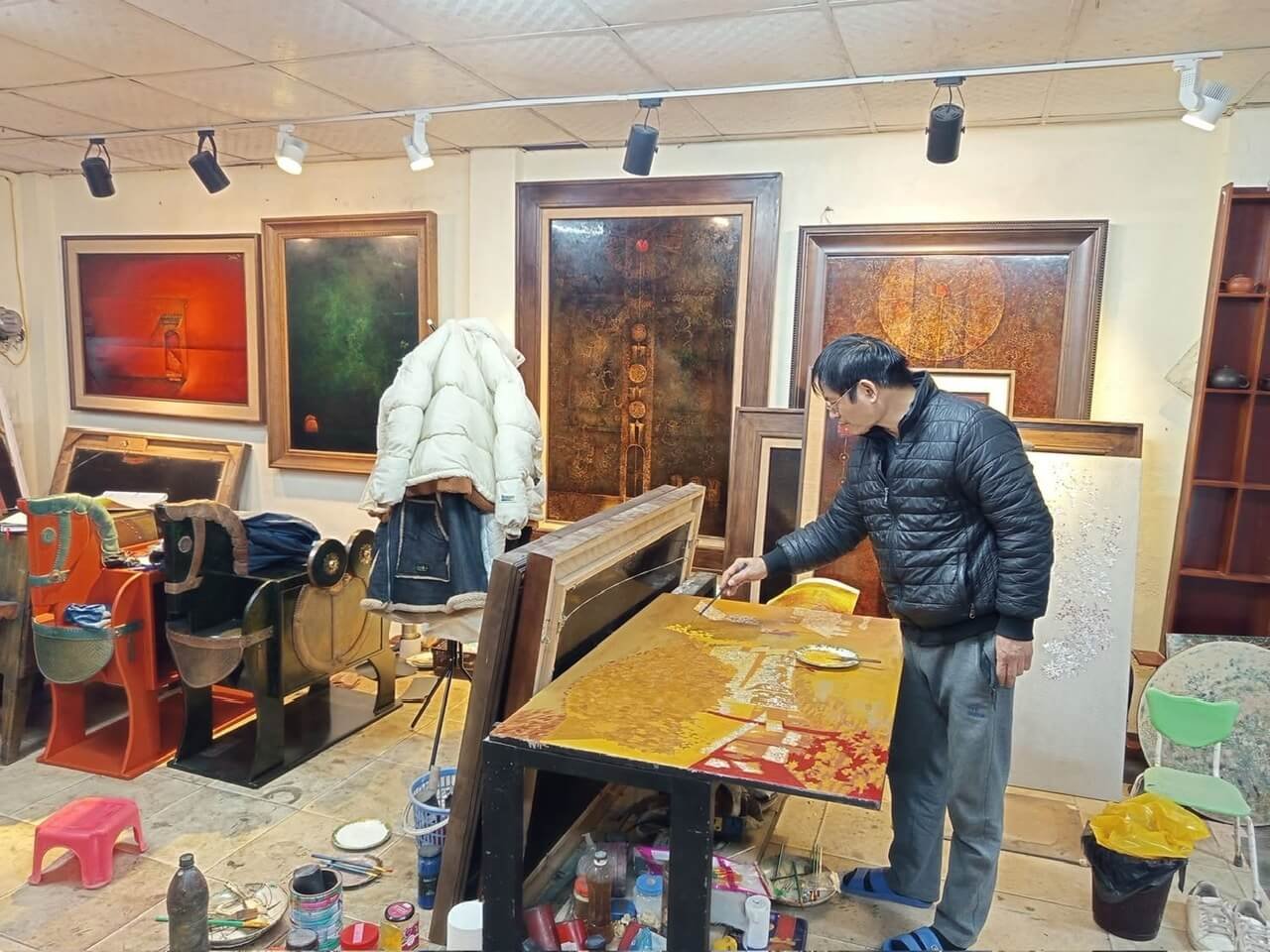
He ran a hand over the surface of a half-finished piece, fingers tracing the delicate veins of color buried beneath layers of lacquer. “ Vietnamese lacquer, on the other hand, is more difficult to handle. It requires more techniques and more time-consuming, more taxing on the body,” he continued. “But that’s what makes it interesting.”
Across the room, Nguyễn Thanh Chung—an art professor specializing in lacquer painting from the University of Industrial Art—chuckled. “Lacquer work isn’t just about painting. It’s an alchemy of materials—gold leaf, silver leaf, tin, eggshells. Each one demands patience, precision. I remember working in the summer heat, forty-five degrees, no fan, no air conditioning.” He shook his head, laughing. “A single gust of wind and your gold leaf in lacquer painting is gone. I used to wrap a cloth around my neck just to stop sweat from dripping onto the painting.”
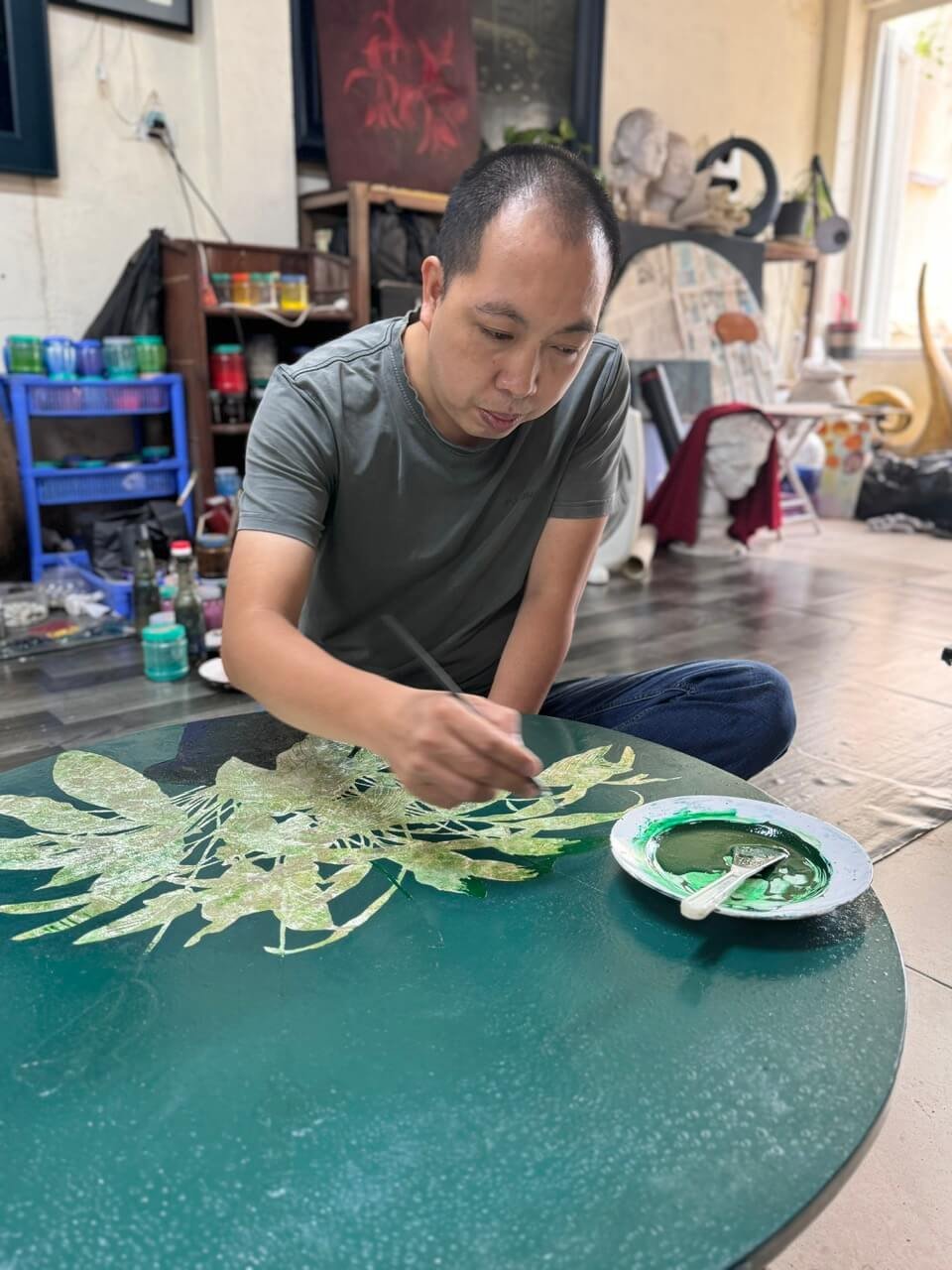
I smiled at the image—an artist frozen in stillness, holding his breath, trying to tame something as weightless as gold.
Artist Thành Chung continued, “That’s why we call it ‘Sơn Mò’ — because the final result is always uncertain. No matter how much we try to control it, lacquer painting techniques have a mind of their own. The lacquer sanding process makes the final decision. Anyone can apply gold, anyone can paint lines, but sanding lacquer art… that’s where the real work begins.”
Artist Hữu Dũng hesitated, his brush hovering midair, his gaze unfocused as if watching memories play out before him. “Lacquer isn’t for the impatient,” he mused. “It demands everything—discipline, resilience. Art isn’t about laziness or impulse. It’s about dedication. About waiting.” He let out a short laugh. “Making lacquer art in Vietnam is like walking through a minefield.”
I glanced at the Vietnamese lacquer paintings leaning against the walls, their surfaces deep and luminous, like looking into dark water. “So how do lacquer artists choose their medium?” I asked.
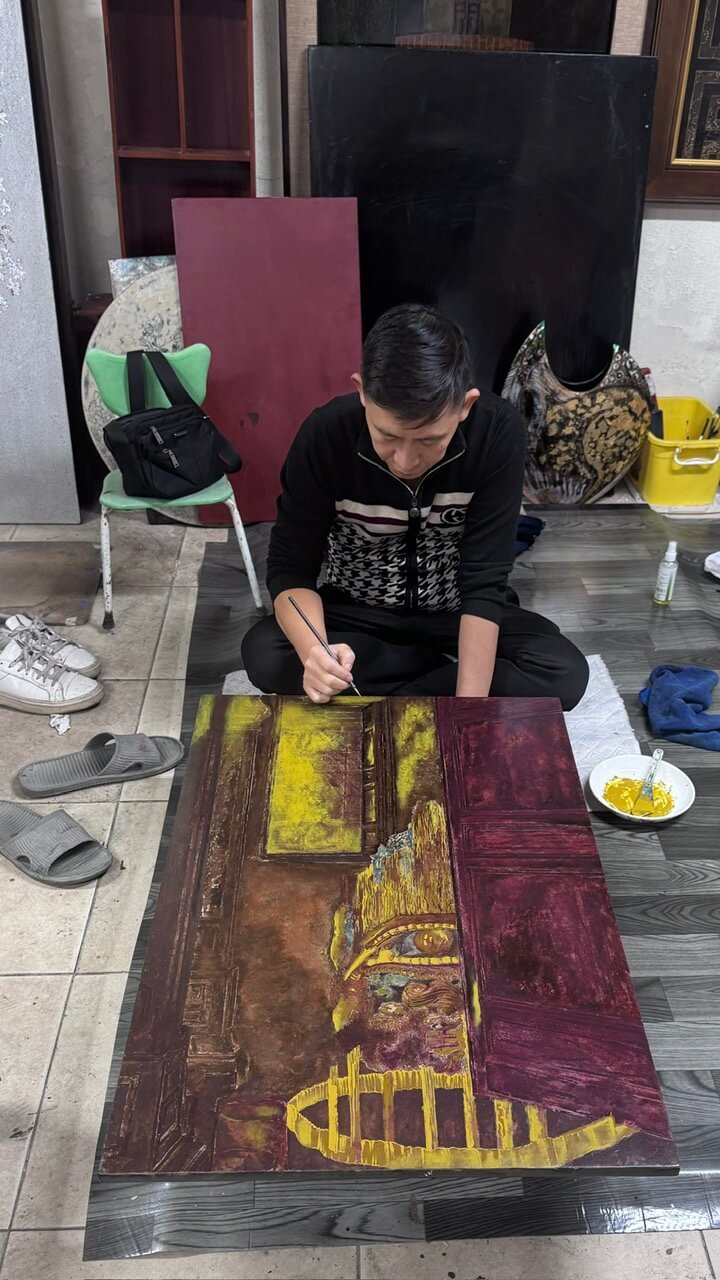
Trần Việt Hùng set down his brush, stretching his fingers. “It depends on their intention,” he said. “Some artists preserve Vietnamese traditional lacquer painting techniques. Others push boundaries, mixing lacquer with unorthodox materials. But lacquer itself—it’s a test of patience, of stamina. It’s Vietnam’s pride.”
The others chuckled, nodding in agreement.
Artist Lương Duy continued, “But that’s exactly why you have to love it. The frustration, the waiting. There’s something incredible about sanding lacquer layers, revealing what’s been buried beneath. The painting speaks to you—you just have to listen.”
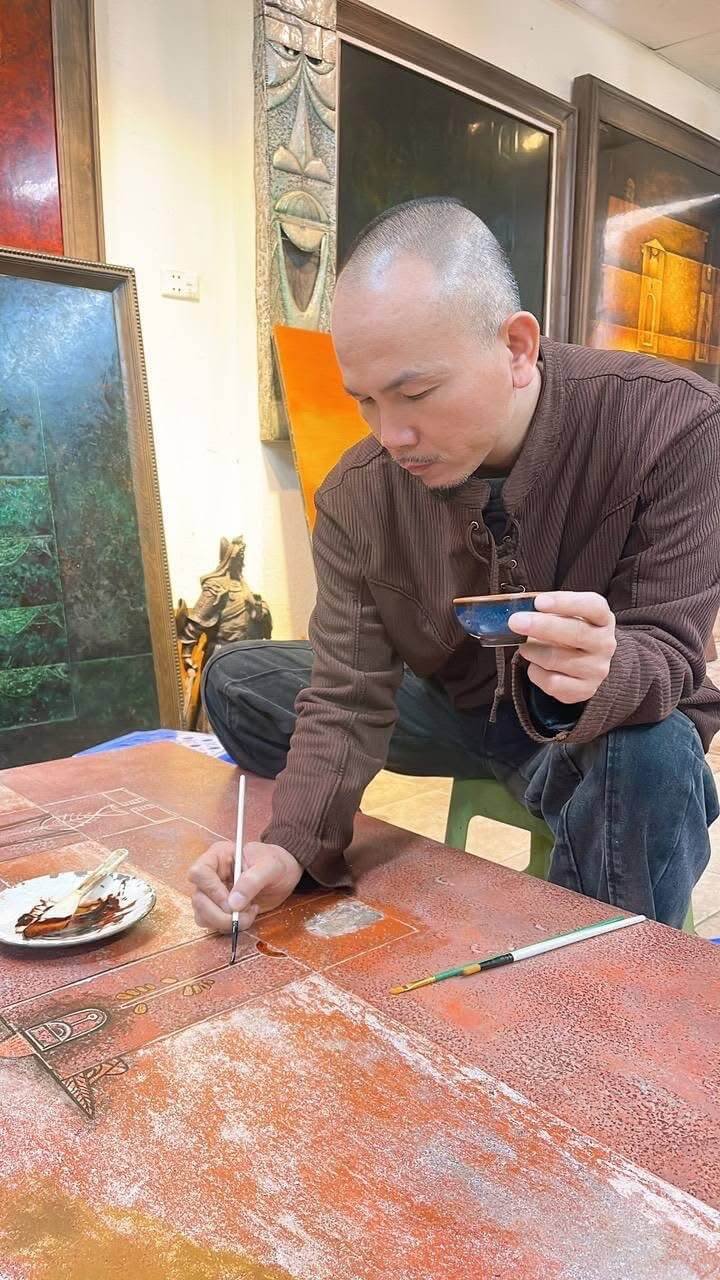
I hesitated before asking my next question. “Some say that using more gold and silver in lacquer paintings makes them more valuable—commercially or aesthetically. Is that true?”
Chung smirked, shaking his head. “That’s like asking if wearing all Gucci and Prada makes you look better. It’s not about how much gold leaf in lacquer you use. It’s about knowing how to balance it, how to make the elements sing together. Anyone can cover a painting in gold. But real artistry…” He tapped the table for emphasis. “That takes knowing when to stop.”
A quiet settled over the Vietnamese lacquer studio. The rain outside had softened to a gentle drizzle, tapping against the windows. The artists returned to their work, hands moving with quiet certainty.
I watched them, thinking about what they had said, about the layers hidden beneath each piece, waiting to be revealed.
Perhaps that’s the way it is with everything—lacquer painting, time, even ourselves.
Layer by layer, we sand away the surface, hoping to find something true beneath it all…
To be continued….

 Français
Français Tiếng Việt
Tiếng Việt
